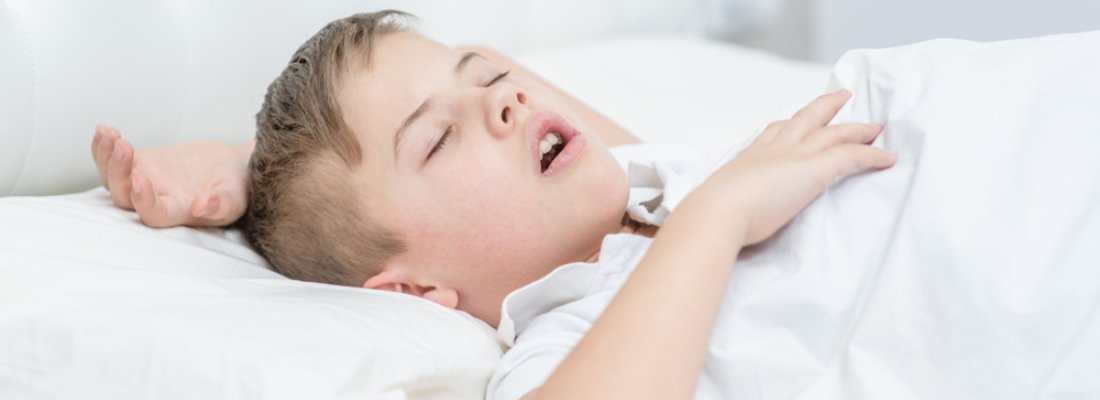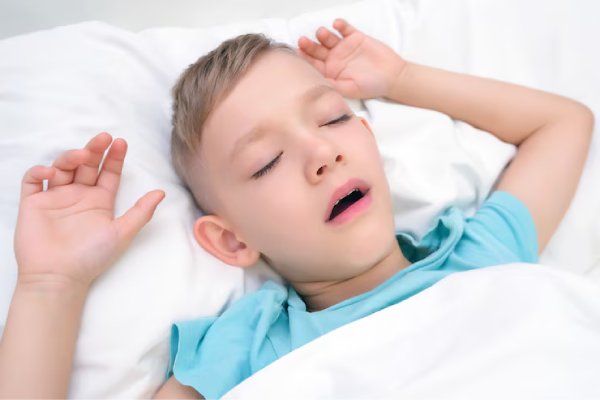
Sleep apnea in children is a condition that disrupts normal breathing during sleep. It can significantly impact their growth and overall well-being. One common type, pediatric obstructive sleep apnea, occurs when the airway becomes partially or fully blocked during sleep, causing repeated interruptions in breathing. Recognizing and addressing sleep apnea in kids early is essential for ensuring their healthy development.
Quality sleep plays a crucial role in a child’s growth and development. During deep sleep, their bodies release growth hormones, repair tissues, and support brain development. When conditions like obstructive sleep apnea interfere, these critical processes are disrupted, leading to physical, cognitive, and emotional challenges.
This blog aims to explore the impact of sleep apnea on children’s health. We’ll discuss its symptoms, how it affects growth, and why early intervention is vital for a child’s future well-being.
Types of Sleep Apnea
There are two main types of sleep apnea:
1. Obstructive Sleep Apnea in Children (OSA)
This occurs when the airway is partially or completely blocked during sleep. Pediatric obstructive sleep apnea often results from enlarged tonsils, adenoids, or obesity, causing disrupted breathing and poor-quality sleep.
2. Central Sleep Apnea
This type happens when the brain fails to send proper signals to control breathing during sleep. Though less common than OSA, it can also affect kids and lead to developmental challenges.
What Causes Sleep Apnea in Children
Several factors can contribute to sleep apnea in kids:
- Enlarged tonsils or adenoids blocking the airway
- Obesity, which narrows the airway due to excess tissue
- Genetic factors or facial structure abnormalities
Prevalence Among Children
Sleep apnea is surprisingly common, affecting around 1 billion people worldwide. In children, obstructive sleep apnea occurs in 1% to 5% across all age groups, from babies and toddlers to teenagers. However, it tends to be most prevalent in kids aged 2 to 6 years, making it especially important for parents to watch for signs during these early years.
Signs and Symptoms of Sleep Apnea in Children
Detecting sleep apnea in children early is vital, as its symptoms can profoundly influence their daily routines and overall development. Here are the key signs to watch for:
Physical Signs
One of the most noticeable signs of obstructive sleep apnea in children is loud snoring. Children with this condition may also experience breathing pauses during sleep, gasping, or choking. These disruptions prevent restful sleep and may cause daytime fatigue.
Behavioral Symptoms
Untreated sleep apnea in kids can lead to hyperactivity, mood swings, and irritability. Children may appear restless or have trouble controlling their emotions. These behaviors often mimic symptoms of attention deficit hyperactivity disorder (ADHD), making diagnosis challenging.
Cognitive Impacts
Sleep disruptions caused by pediatric obstructive sleep apnea can affect cognitive function. Children may struggle with concentration, memory, and learning in school. They might appear inattentive or have difficulty completing tasks, further impacting their academic performance.
Recognizing these symptoms early allows parents and caregivers to seek professional help, ensuring children receive the necessary support.
The Role of Sleep in Growth and Development
Sleep is vital for a child’s growth and development, and disruptions caused by sleep apnea in children can have lasting effects. The connection between sleep and development highlights why it’s necessary to address conditions like pediatric obstructive sleep apnea early.
How Sleep Affects Physical Growth
During deep sleep, the body releases growth hormones essential for physical development. When obstructive sleep apnea in children interrupts this process, it can hinder proper growth. Consistent sleep disruptions can limit the release of these critical hormones, impacting overall physical health.
Importance of Sleep for Brain Development and Emotional Well-Being
Quality sleep supports brain development, helping children improve memory, focus, and problem-solving skills. For children with sleep apnea in kids, frequent interruptions during sleep can cause mood swings, irritability, and difficulties regulating emotions. Restorative sleep also builds emotional resilience and helps children navigate social situations effectively.
Struggling with Sleep Apnea?
Diagnosis and Treatment Options
Proper diagnosis and treatment of sleep apnea in children are essential for improving their quality of life and preventing long-term issues. Early intervention is the key to managing the condition effectively.How Sleep Apnea is Diagnosed in Children
Diagnosing sleep apnea in kids typically involves a combination of medical history reviews and physical examinations. Sleep studies, also known as polysomnography, are the gold standard for diagnosing pediatric obstructive sleep apnea. These studies monitor a child’s breathing, oxygen levels, and sleep patterns to identify disruptions.Treatment Methods for Sleep Apnea in Children
Treatment plans for obstructive sleep apnea in children depends on its severity and underlying causes. Some common approaches include:Lifestyle Changes
Encouraging healthy weight management and improving sleep hygiene can reduce symptoms in children where obesity is a contributing factor.Medical Interventions
CPAP Therapy: A continuous positive airway pressure machine helps keep the airway open during sleep.Tonsillectomy or Adenoidectomy: Removing enlarged tonsils or adenoids can significantly alleviate symptoms in many cases.Medications: Anti-inflammatory medications or nasal sprays may help reduce airway swelling.Importance of Early Intervention
Untreated pediatric obstructive sleep apnea can lead to developmental delays, learning difficulties, and long-term health issues like cardiovascular problems. Addressing the condition promptly ensures children get the restorative sleep needed for healthy growth and cognitive development.Parents and caregivers should act quickly if symptoms of sleep apnea in kids appear, as timely treatment can make a significant difference.Tips for Parents and Caregivers
As a parent or caregiver, you have an essential role in helping your child manage sleep apnea. It’s all about spotting the signs early and creating healthy habits that support better sleep.Spotting the Signs of Sleep Apnea
Keep an eye out for symptoms like loud snoring, gasping, or pauses in your child’s breathing while they sleep. If they seem extra cranky, overly hyper, or are struggling in school, it might be linked to poor sleep. Catching these red flags early can help you get the right treatment and prevent bigger problems down the road.Encouraging Better Sleep Habits
A solid bedtime routine can work wonders. Set a regular schedule, limit screen time before bed, and create a cozy, distraction-free sleep environment. These little changes can make a big difference, especially for kids dealing with obstructive sleep apnea.Checking In with Your Pediatrician
Regular doctor visits are super important. If you notice anything off, bring it up with your pediatrician. They might suggest a sleep study or other evaluations to get to the root of the issue. Early action can lead to better outcomes and happier nights for everyone.With consistent involvement and small adjustments, you can support your child in managing sleep apnea and ensuring they grow up healthy, and strong.Conclusion
Helping kids with sleep apnea is essential for their growth and overall well-being. When sleep gets disrupted, it can affect their physical health, learning abilities, and even their emotions. Signs like snoring, pauses in breathing, or changes in behavior shouldn’t be ignored—they’re a signal to act quickly. Sleep studies can confirm the diagnosis, and treatments like CPAP therapy, better sleep routines, or sometimes surgery can make a big difference. Parents and caregivers are the front line in spotting these issues, encouraging good sleep habits, and seeking advice from doctors. When kids get the quality sleep they need, they’re set up to grow, learn, and thrive.Ready to Take Control of Your Sleep?
Book your appointment today and start your journey toward better sleep health.

